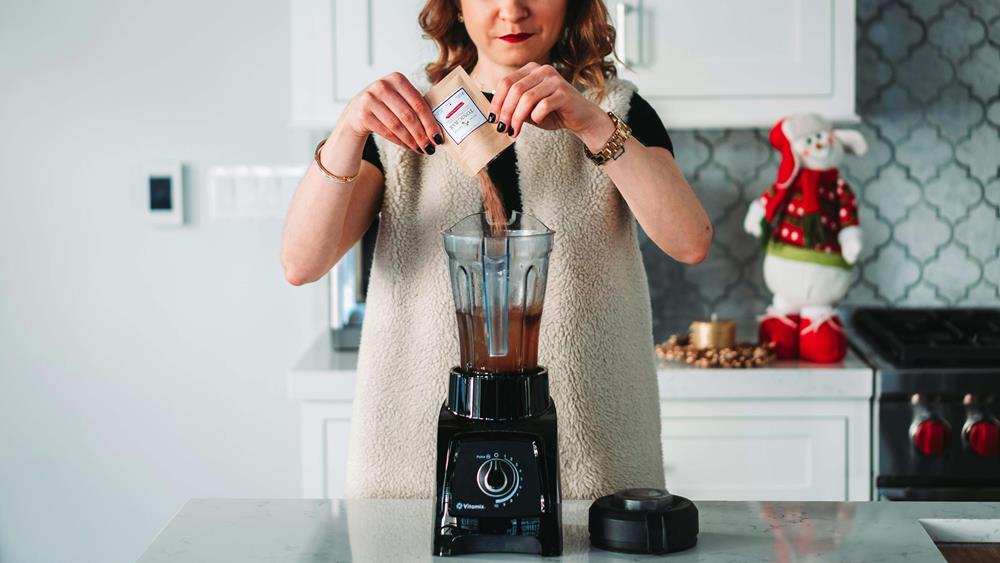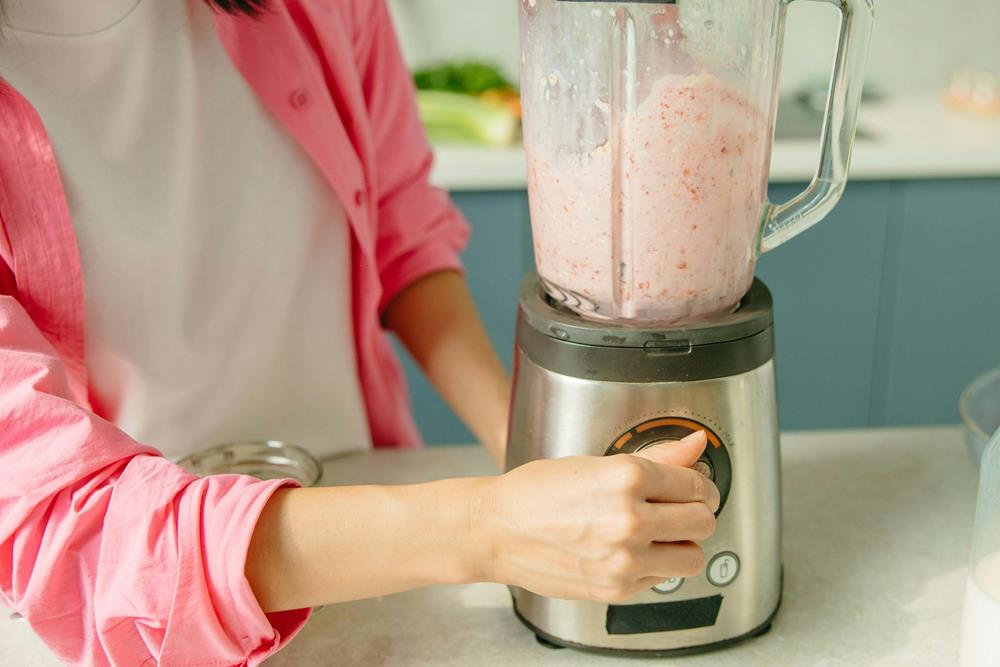In the modern kitchen, the blender stands out as a versatile and indispensable tool. Originally introduced in the early 20th century, this appliance quickly became a staple in homes worldwide, revolutionizing how we prepare food. From smoothies and soups to sauces and desserts, blenders make culinary tasks quicker and easier, allowing both novice cooks and seasoned chefs to enhance their kitchen prowess. In this article, we will examine the evolution of the blender over the years and highlight its many advantages, including its impact on nutrition and culinary efficiency.
The Origins of the Blender
The story of the blender begins in the early 1920s with Stephen Poplawski, a Polish-American inventor. Poplawski is credited with creating the first blender in 1922. His innovation was designed to make soda fountain drinks, and it featured a spinning blade at the bottom of a container—a basic yet transformative design that is still used in modern blenders.
The blender’s development took a notable turn in 1937 when Fred Waring, a popular musician and band leader, financed and promoted the Miracle Mixer, a new and improved version of Poplawski’s invention. By 1937, Waring had renamed the device to the Waring Blendor (the misspelling was intentional), believing in its potential to do more than just mix drinks. His efforts helped popularize the blender for a variety of kitchen tasks.
The Blender in the 1940s and 1950s
The 1940s and 1950s were transformative decades for the blender, marking its transition from a commercial gadget to a household necessity. After World War II, the United States saw an economic upswing, and consumers had more disposable income to spend on home appliances. This era was characterized by a fascination with automation and convenience in the kitchen, and the blender fits perfectly into this trend.
Fred Waring’s redesign and rebranding of the blender in the late 1930s as the Waring Blendor capitalized on this post-war consumer boom. By the mid-1940s, Waring’s company had made significant strides in marketing the blender to American families. Demonstrations in department stores and appearances on cooking shows helped boost the popularity of the Waring Blendor, showcasing its ability to facilitate easier and faster food preparation.
During the 1950s, the blender became even more entrenched in American culture. It was advertised not just as a tool for making drinks but as an essential appliance for any modern kitchen. Recipes and cookbooks began to feature dishes that required or were enhanced by using a blender, from sauces and soups to new kinds of desserts. The introduction of television as a mass medium also played a role, with blenders appearing in commercial segments and even in sitcoms, further embedding them in the domestic life of the era.
The Blender’s History from the 1970s to the 1990s
From the 1970s to the 1990s, the blender continued to evolve, reflecting changes in technology and consumer preferences. The 1970s marked a period of innovation in kitchen appliances, with manufacturers introducing features that offered more power and versatility. During this decade, the popularity of health and fitness surged, leading to a greater demand for appliances that could help prepare nutritious meals and drinks. Blenders were perfectly positioned to capitalize on this trend, as they could easily make health-focused foods like smoothies and puréed soups.
In the 1980s, the rise of the food processor challenged the dominance of the traditional blender. However, manufacturers responded by enhancing blender functions, adding multiple speed settings, and using more durable materials like glass and high-strength plastics for the jars. Companies like Vitamix started to gain prominence by offering high-powered blenders that could handle a variety of tasks previously reserved for professional kitchens.
The 1990s saw a further diversification in the blender market. The decade was characterized by the introduction of smaller, single-serve blenders that targeted individuals and small families looking for quick and easy meal solutions. The emergence of infomercials as a powerful marketing tool also played a significant role in promoting these new blender types. Brands like Magic Bullet became household names thanks to their effective direct-to-consumer marketing campaigns that demonstrated the appliance’s versatility in real-time.
The Modern Evolution of the Blender
As the new millennium unfolded, the blender continued to adapt and evolve, driven by technological advances and shifting consumer trends. The 2000s saw the rise of high-performance blenders that catered to an increasingly health-conscious consumer base. Leading the charge were brands like Vitamix and Blendtec, whose powerful machines could pulverize practically anything from fruits and vegetables to seeds and nuts, enabling the creation of smoother smoothies, homemade nut butter, and whole-food juices.
These high-end blenders became symbols of a lifestyle that prioritized nutrition and culinary prowess, with features that could heat soups through friction heat, grind grains, and churn frozen ingredients into ice cream. The popularity of these capabilities was mirrored in the explosion of health-focused diets and the raw food movement, which emphasized the need for powerful blenders.
The 2010s saw further diversification in the market with the advent of smart blenders. These devices, equipped with Bluetooth and WiFi connectivity, could be controlled via smartphone apps, providing users with features such as nutritional tracking, customizable blending cycles, and maintenance reminders. Brands like NutriBullet also gained prominence during this era with their compact, efficient designs that appealed to small households and individuals keen on quick and easy nutrition solutions.
The Benefits of Having a Blender at Home
From whipping up quick meals to helping maintain a healthy diet, the benefits of owning a blender are manifold. Here are some of the key advantages of having this appliance in your kitchen.
Convenience
One of the primary benefits of having a blender at home is convenience. With a blender, you can quickly make a variety of dishes and beverages, from smoothies and shakes to soups and dressings. This saves time on food preparation and cleanup, especially for busy individuals or families. The ability to blend up a nutritious smoothie or a soup in minutes means less time chopping and cooking, making it easier to fit healthy meals into a hectic schedule.
Nutritional Intake
Blenders make it simple to increase your intake of fruits and vegetables, which are vital components of a healthy diet. By making smoothies or pureeing vegetable soups, you can consume the recommended daily amount of vitamins and minerals more easily. This is particularly beneficial for those who find it challenging to eat enough servings of fruits and vegetables throughout the day. Additionally, blending can help preserve the nutrients in fresh produce, which might be lost through other cooking methods.
Versatility
The versatility of a blender is unmatched in the kitchen. It can perform a variety of tasks that go beyond just making drinks. You can use it to make homemade nut butter, baby food, dips, ice cream, and even dough or batter for pancakes and cakes. This versatility not only saves money on buying pre-made products but also allows for creativity in the kitchen, as you can experiment with different ingredients and flavors.
Dietary Management
For those with specific dietary needs, a blender is incredibly useful. It can be used to tailor meals and snacks to meet dietary restrictions, such as gluten-free, keto, or vegan diets. For example, a blender can help create dairy-free milk alternatives like almond or oat milk, or gluten-free flours from nuts and oats. This control over ingredients is essential for those who need to avoid certain foods for health reasons.
Food Waste Reduction
A blender can help reduce food waste, a growing concern in many households. Overripe fruits and vegetables that might otherwise be thrown out can be turned into smoothies or soups. This not only helps in saving money but also contributes to environmental sustainability by minimizing the amount of food waste produced at home.
Interesting Facts About the Blender
Blenders might seem straightforward, but beneath their simple exterior lies a wealth of interesting facts and figures that highlight their impact and usage. From surprising applications to impressive sales figures, here are some intriguing details about this common kitchen appliance.
- Global Market Size: The global blender market is a testament to the appliance’s popularity and utility. As of recent reports, it is valued at several billion dollars and is expected to grow steadily. This growth is driven by rising health awareness and the increasing demand for convenient kitchen solutions worldwide.
- Speed Capabilities: High-performance blenders can spin their blades at incredible speeds, with some models reaching up to 30,000 RPM (revolutions per minute). This speed is comparable to that of a car engine at high power, which explains why these blenders can pulverize even the toughest ingredients into smooth textures.
- Energy Consumption: Despite their power, most blenders are relatively energy-efficient. On average, a typical household blender uses about 500 to 1,000 watts, roughly equivalent to a small microwave oven. This makes them an eco-friendlier choice for daily cooking tasks.
- Diverse Uses Beyond Food: While primarily used in food preparation, blenders have also found a niche in unusual applications. For example, scientific labs use certain types of blenders for mixing chemicals, making them a tool not just confined to culinary arts but also valuable in research and industrial settings.
- Record-Breaking Blends: The blender’s ability to mix ingredients has been put to the test in various challenges, including attempts to blend unusual items to demonstrate power and durability. One popular blender brand famously created a viral marketing campaign where they blended everything from smartphones to golf balls, showcasing their product’s robustness.
Conclusion
As we’ve seen, the blender is more than just a simple kitchen tool; it’s a dynamic device that has evolved significantly since its inception in the early 20th century. From Stephen Poplawski’s initial designs to the high-tech, multi-functional appliances we see today, blenders have consistently adapted to meet the changing needs and desires of consumers. Their ability to simplify food preparation, enhance nutritional intake, and encourage culinary creativity has made them indispensable in homes around the world. Moreover, the continued innovation in blender technology promises to deliver even more exciting and useful features.
The journey of the blender, from a basic mixer to a cornerstone of modern kitchen appliances, reflects both technological advancement and a deeper understanding of the everyday needs of people everywhere. Whether for making a quick breakfast smoothie or preparing a gourmet sauce, the blender remains a key player in making our culinary tasks easier and more enjoyable.




